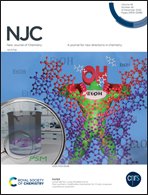Dithiocarbamate transfer reaction from methylene-bis(dithiocarbamates) to molybdenum dithiocarbamates in engine lubricants investigated using laboratory experiments†
Abstract
Elaboration of new engine oil specifications and growing level of environmental awareness have been calling for better fuel efficiency and reduction of carbon emissions. In this context, molybdenum dithiocarbamates (MoDTC) are important lubricant additives used to reduce friction coefficients and hence to improve fuel economy. It has been recently shown that under engine test conditions, the combined use of MoDTC and methylene-bis(dithiocarbamates) (MBDTC) leads to the prolonged existence of MoDTC complexes at useful levels in formulated engine oil due to ligand transfer reactions, resulting in the synergistic enhancement of tribological performances. In order to investigate the process of this ligand transfer at the molecular level in detail, laboratory ageing experiments involving MoDTC, MBDTC and zinc dithiophosphates (ZnDTP) – a combination of additives frequently used in formulated lubricants – in solution in hydrocarbon base oils were performed under thermal and thermo-oxidative conditions. The evolution of the concentrations of the substrates and of their transformation products were followed using HPLC-MS, Probe-MS analyses and NMR spectroscopy. It could be shown that Zn(II) complexes such as ZnDTP are able to induce dithiocarbamate (DTC) transfer reactions from MBDTC to MoDTC through a mechanism involving activation of carbon-sulfur bonds on MBDTC. Zn(II) ions act as a Lewis acid inducing the release of DTC from MBDTC. Oxidative conditions (NO2 in air) were also shown to induce the release of DTC from MBDTC, even in the absence of Zn(II) ions, which then become available for ligand exchange with MoDTC or for re-complexation of the metal core of Mo complexes (Mo2O2S2 or Mo oxysulfides) after partial oxidative degradation of the genuine MoDTC ligands.



 Please wait while we load your content...
Please wait while we load your content...